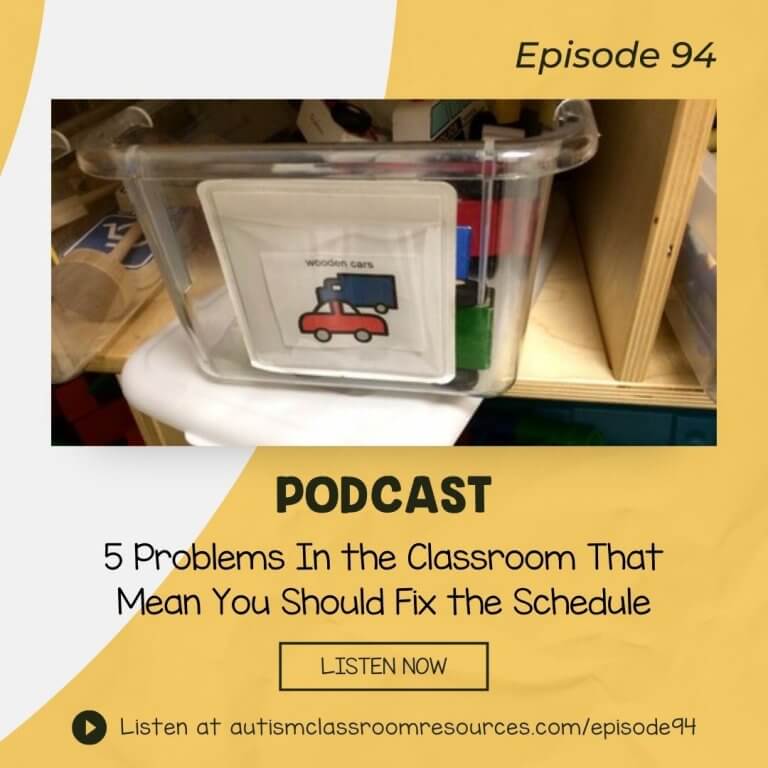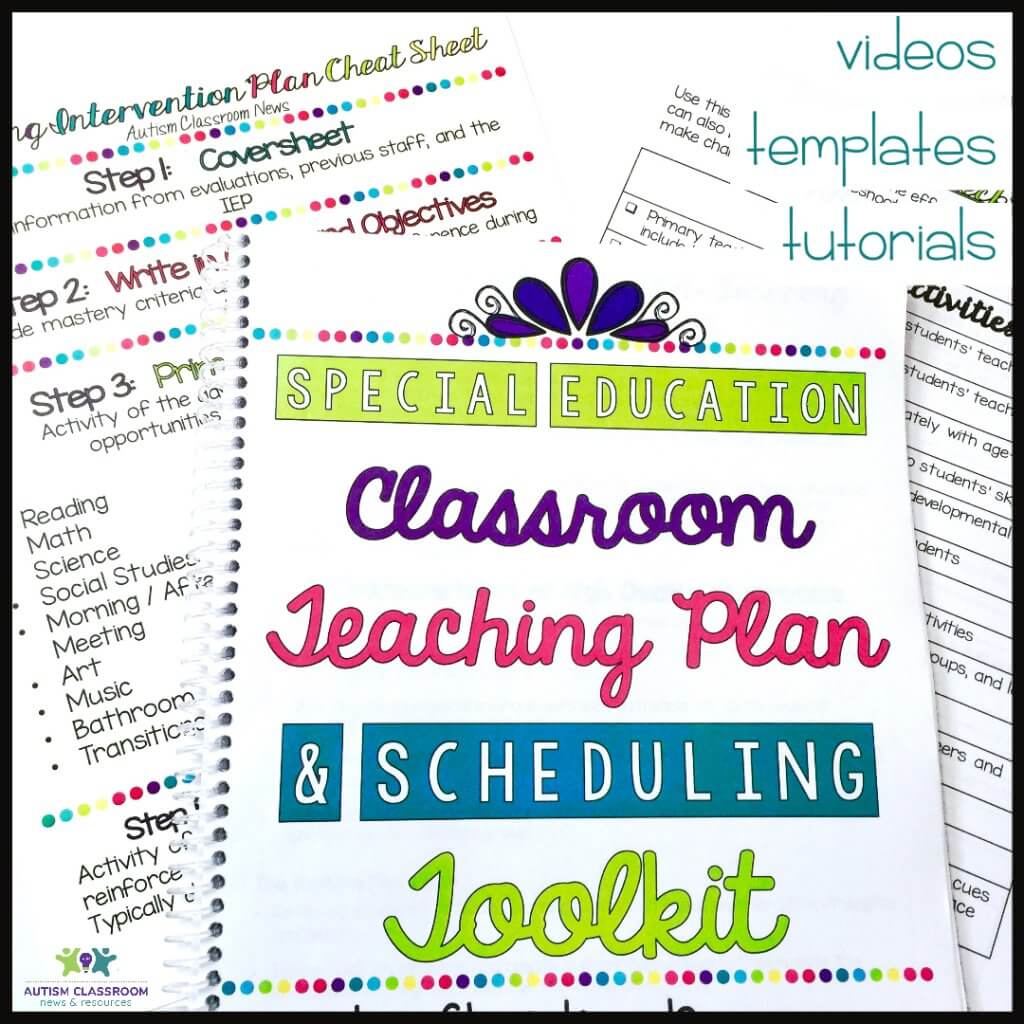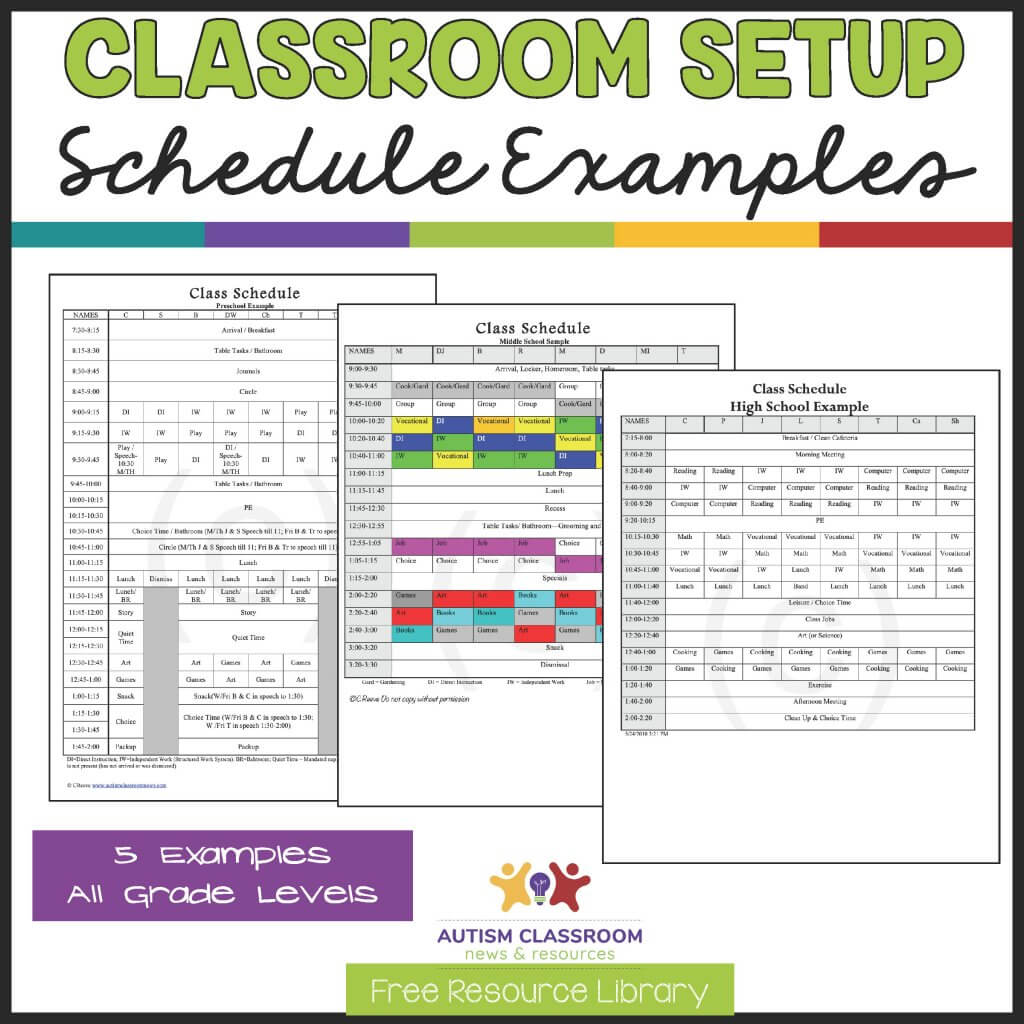Welcome to the Autism Classroom Resources Podcast, the podcast for special educators who are looking for personal and professional development.
Christine Reeve: I’m your host, Dr. Christine Reeve. For more than 20 years, I’ve worn lots of hats in special education but my real love is helping special educators like you. This podcast will give you tips and ways to implement research-based practices in a practical way in your classroom to make your job easier and more effective.
Welcome back to the Autism Classroom Resources Podcast. I’m Christine Reeve, and I’m your host. I am so glad that you’re here as we continue our snack sized episodes of troubleshooting problems with classroom setup. Today we’re focusing on things that you can fix with tweaks to the classroom schedule. If you haven’t listened to how I troubleshoot classrooms, you might want to go back and listen to Episode 89 and download the freebie there at autismclassroomresources.com/episode89, then you can think about what works and what doesn’t work in your classroom and you’ll be ready to go. Now, let’s get started.
Our first issue not working today is when students are wandering away from the activity before it’s finished. That one is pretty simple. There are two ways that we need to address that. One is that the activity is not engaging enough and maybe we can boost it by increasing the engagement of the activity. The other is that we probably need to make the activity time shorter. Usually this is an indicator that the activity is lasting too long. In episode 81, I talked about needing each activity to end successfully. This is part of that principle. You always want to end on a good note because remember that once you lose a student’s engagement, it’s multiple times harder to get it back than if you keep that engagement maintained throughout the whole day.
Our next issue is pretty similar. It’s when you have behavior issues that erupt before the activity ends. Chances are that this is also a warning sign that the activity is lasting too long. Clearly, it’s something that warrants a larger evaluation of the function of behavior but one of the things to investigate is whether shortening the activity impacts the behavior. If multiple students are having the same issue, chances are good that the activity is too long. I would definitely look at shortening the activity. If you aren’t able to shorten the activity, you might be able to do something like boosting the engagement of the activity or maybe you could add something like visual support to the activity to show them how long something’s going to last. You could show them the different activities they have to get through before it’s going to end. That visual predictability may make it a little easier to tolerate. There are always alternative solutions if changing the schedule isn’t an option, and I recognize sometimes it’s not.
Next up, what about not being able to finish the activity that you had planned in the time that you scheduled but your students are still engaged actively at the end? You’re finding that every day you never finish what you had planned. That’s the time that you might try lengthening the time period of that activity if it’s possible and seeing what happens. That’s a sign that your activity might not be long enough, that your students actually could stay there for a longer period of time and it might be time to start boosting that time period.
Finally, what about if students are running into each other and bunching up when they’re checking their visual schedules? Now, this isn’t so much a scheduled timing issue, but it is related to transitioning between activities, so to me it made sense to put it in this episode. This may mean that you need a transitioning system. Think about releasing students in small groups to go to the schedule rather than everyone going at the same time. During centers, maybe the staff member who leads independent work transitions their group to schedules, drops them off at their next center, picks up the next group, checks their schedule with them, drops them off at their next center until they get their next students, checks their schedule, and takes them back to independent work. If it’s a whole group activity, then the teacher could dismiss the students by name, by what they’re wearing, by what their name starts with, any kind of criteria to make it engaging but also cut down on the crowding in the schedule area.
While the schedule is the hardest thing I think to make in the classroom setup process, it is possibly the easiest thing to troubleshoot because when there is a problem, it’s pretty clear what it is. Hop over to the blog post for this episode and you can grab a free set of classroom schedule examples if you haven’t gotten them earlier in this series, as well as a transcript and related links at autismclassroomresources.com/episode94. If you’re looking for more individualized help and support in setting up and working with students with disabilities, definitely come and join us at specialeducatoracademy.com. We have a seven day free trial, we have training, we have tons of support, and tons of resources that will help teachers just like you. As always, thank you so much for spending this time with me. I hope that you will come back next week when I’ll be addressing things that mean that we need to adjust our zoning plan. Until then, I’ll just be sitting here determining the goldilocks of time periods for schedules.








